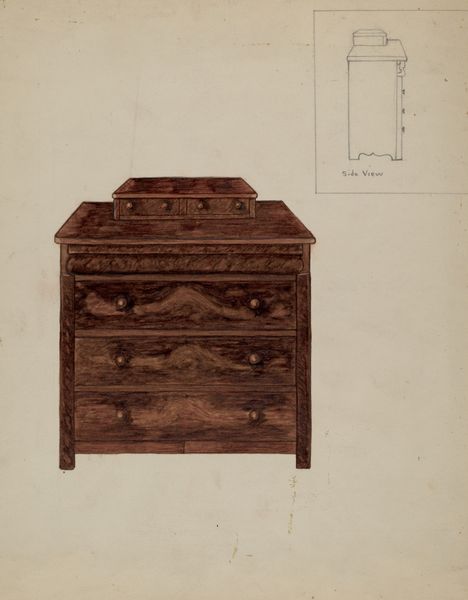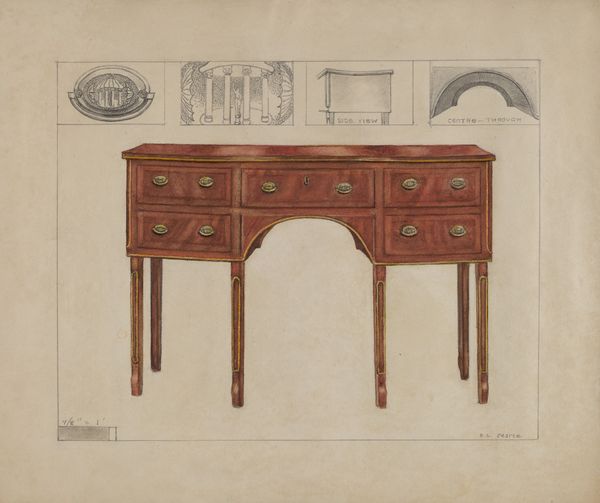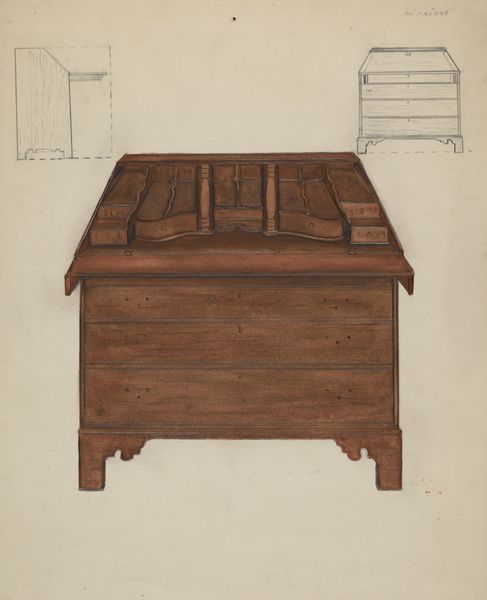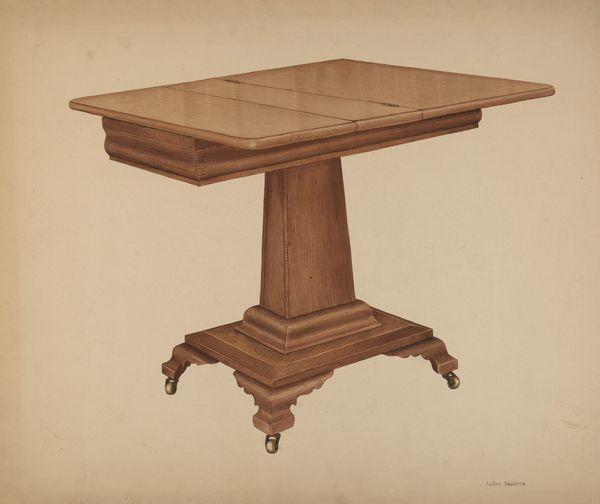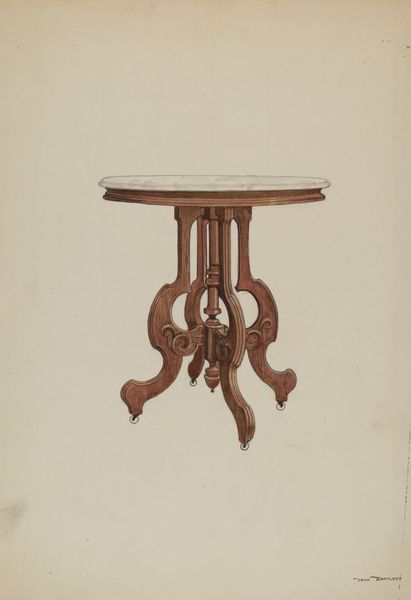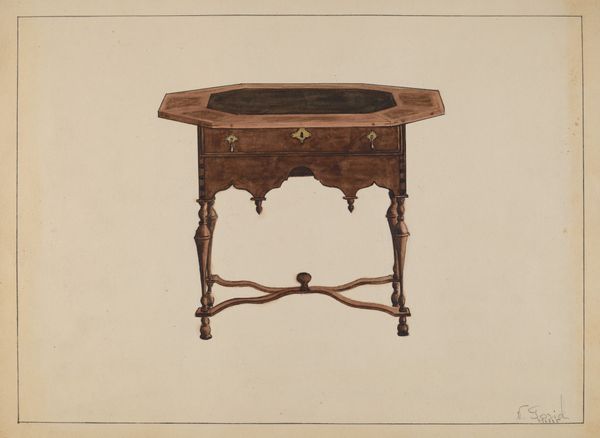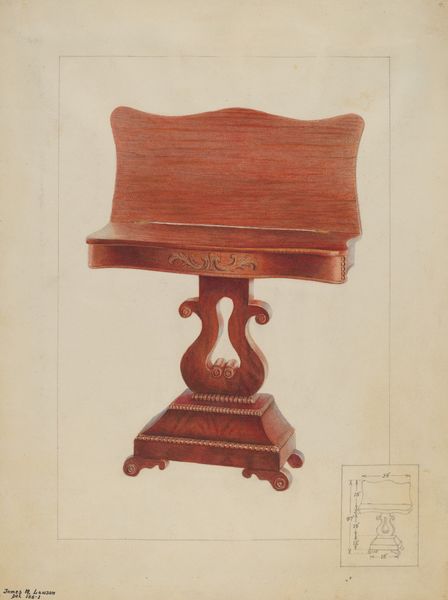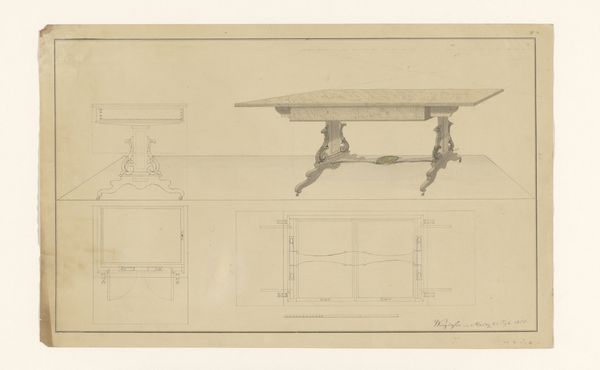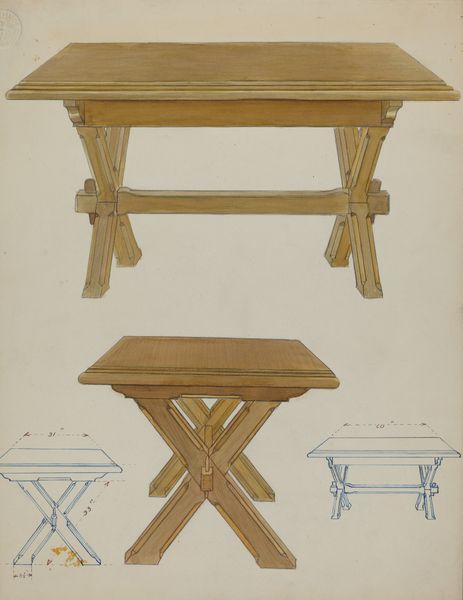
drawing, pencil
#
drawing
#
charcoal drawing
#
underpainting
#
pencil
#
cardboard
#
academic-art
#
watercolor
Dimensions: overall: 22.9 x 27.9 cm (9 x 11 in.) Original IAD Object: 29x18x30
Copyright: National Gallery of Art: CC0 1.0
Curator: Welcome! We're looking at "Table," a drawing made circa 1937 by Edna C. Rex, using pencil, charcoal and watercolor on cardboard. Editor: My first thought is stillness. It’s very formal, the single light source giving it an almost reverent quality. It feels… contained. Curator: Yes, the technique lends itself to that formality. Rex employed a variety of media to achieve this look, which makes it all the more intriguing. We have the detailed underpainting in pencil and charcoal with watercolor to suggest the wood grain. There’s an emphasis on accurate rendering, which aligns with academic artistic traditions. Editor: Absolutely. But I'm also seeing subtle details. Look at the beaded trim around the base, the delicate feet... they carry associations of wealth, domestic comfort. It's the iconography of middle-class stability in the 1930s. A world perhaps threatened by the Depression. Curator: Good point. There’s definitely a tension here. It feels like a depiction of idealized domesticity during a period when that was actively under threat for many. The inclusion of that quick, almost ghostlike preliminary sketch to the lower left also suggests that art could play a vital role in helping one re-imagine objects of daily life, or to re-imagine the familiar, perhaps even during times of crisis. Editor: Exactly. Furniture like this table stood for something secure and enduring. Notice how centrally it is placed—isolated from everything else. It suggests more than just function. It evokes stability and a particular way of life during a specific era in American history. And in watercolor of all things! This only further underlines how a transient material like pigment, as well as domestic items in general, acquire an aura and symbolic heft over time. Curator: Rex likely made this as part of an academic exercise. But the cultural context imbues this study with additional meaning, something beyond simply studying form. Editor: Ultimately, I see this not only as a visual document of a time, but a potent emblem of memory and resilience in an ever-changing landscape. Curator: Agreed. The piece allows us to look through both artistic and social lenses. It showcases the power of a seemingly simple object to echo complex histories.
Comments
No comments
Be the first to comment and join the conversation on the ultimate creative platform.
